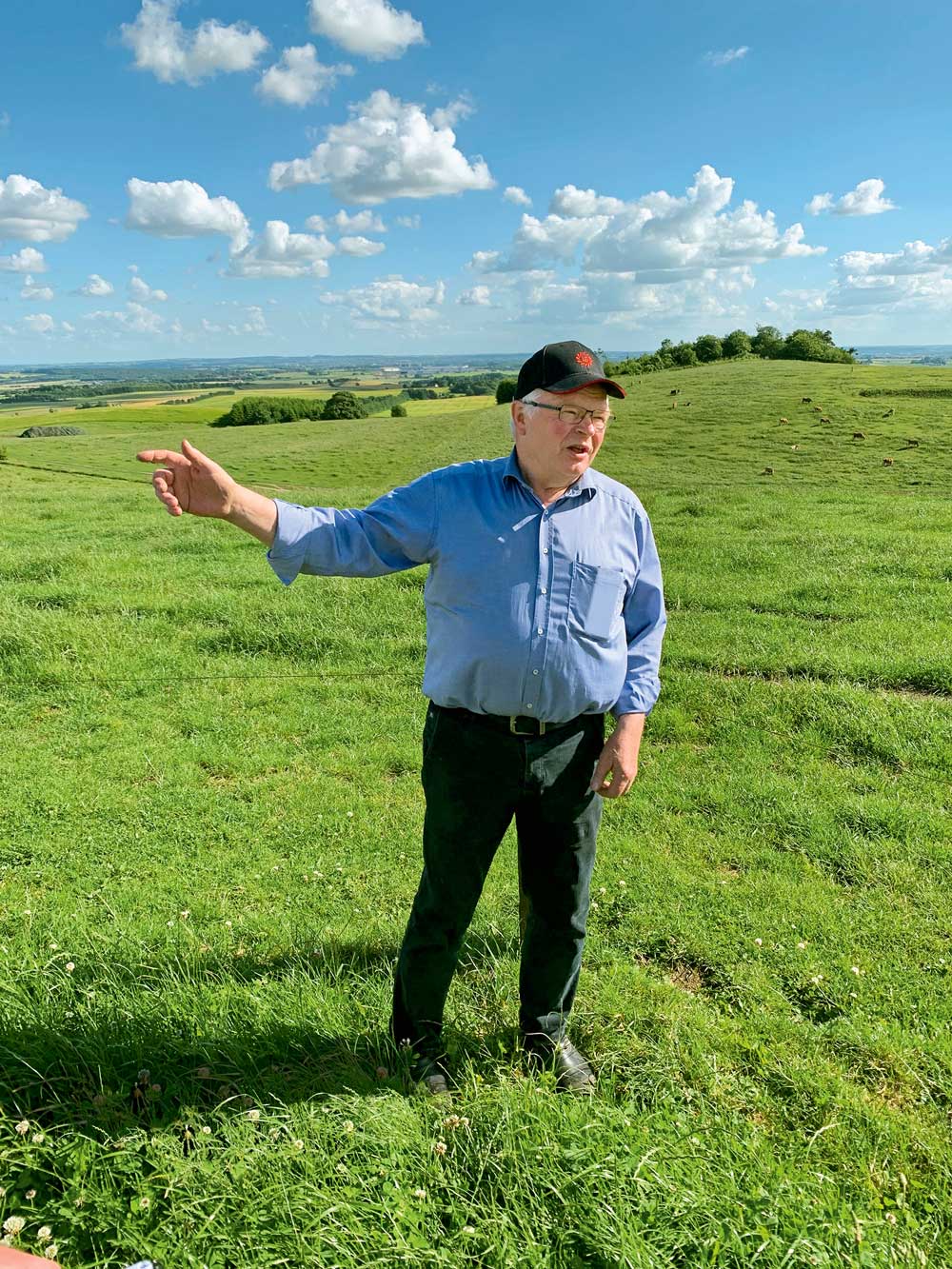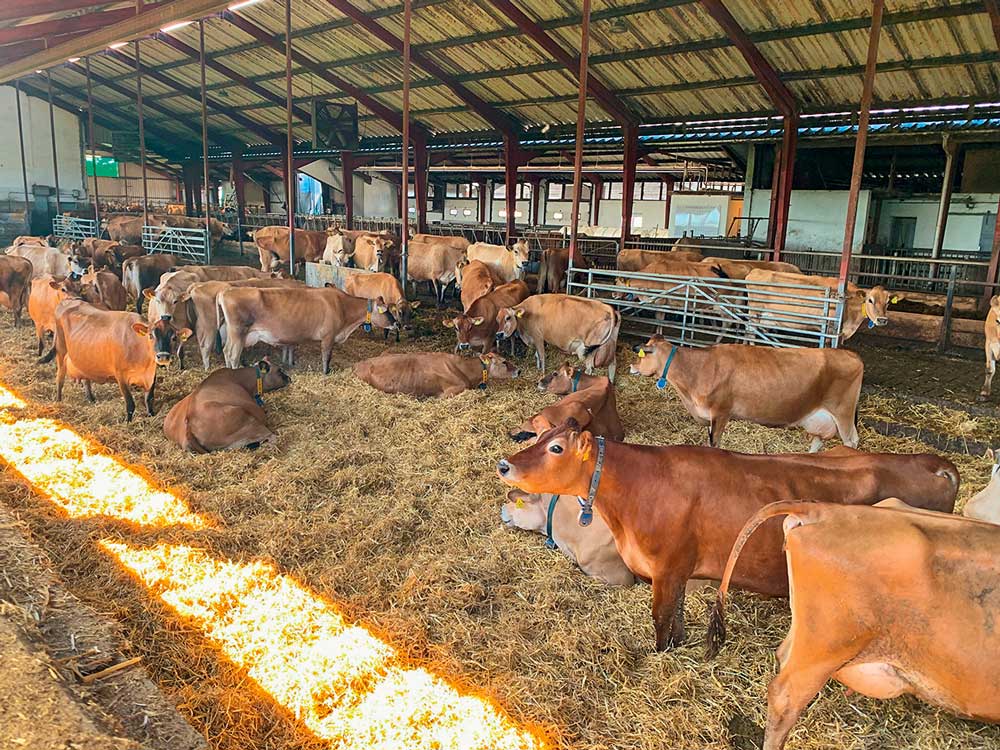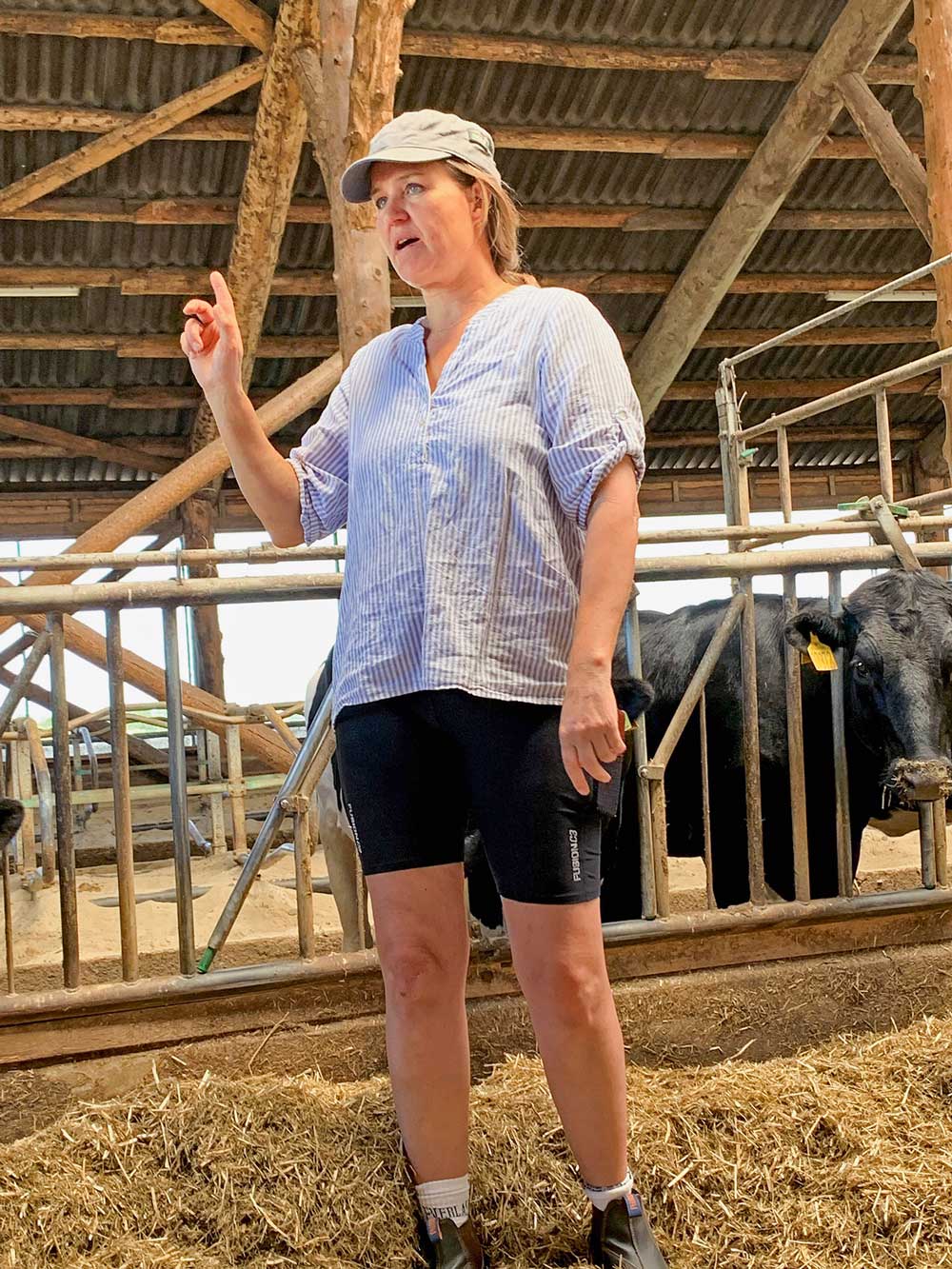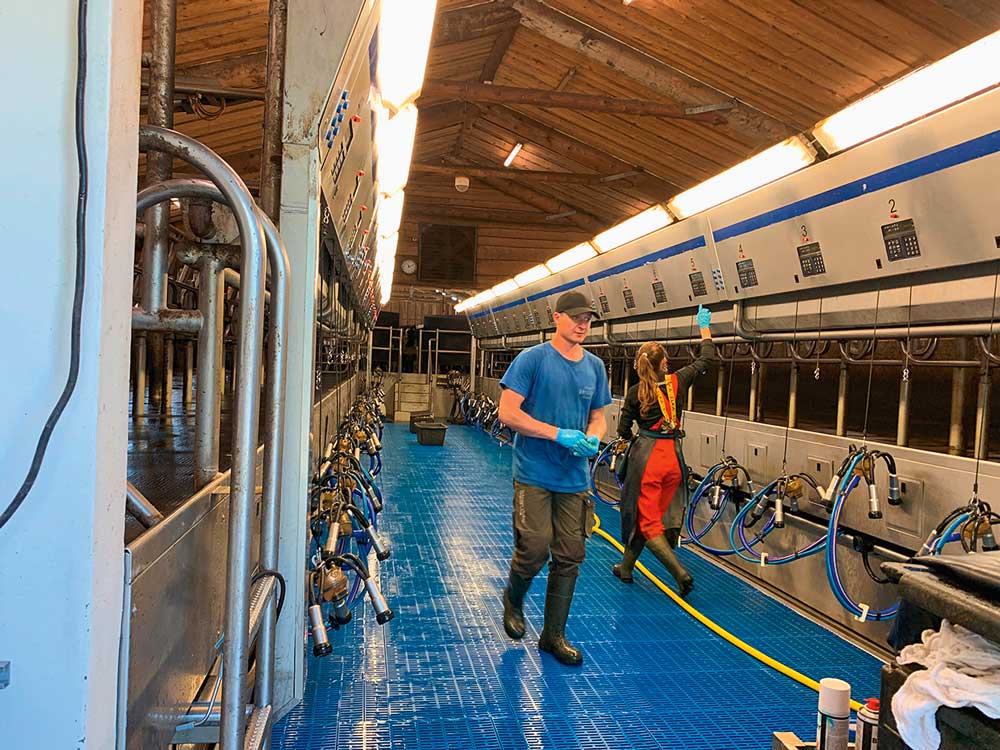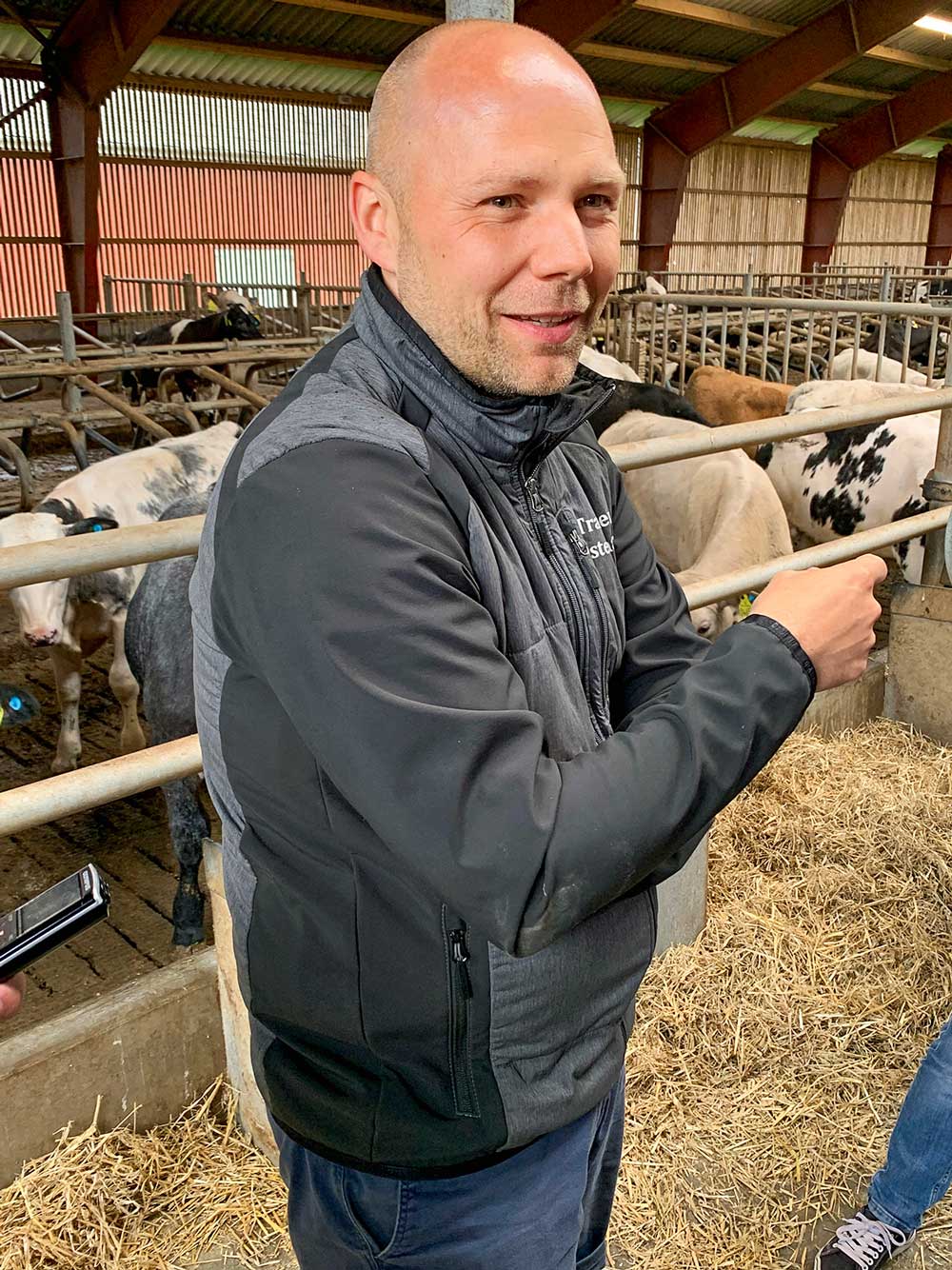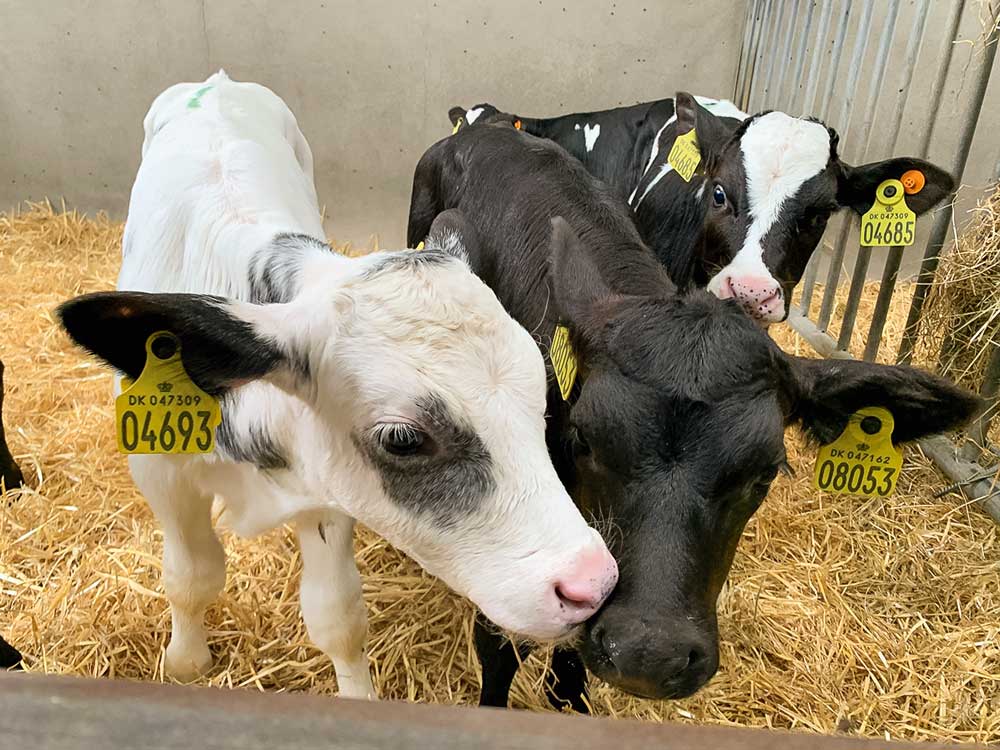Denmark 1: Courageous concepts of dairy farmers
By Thomas Künzel, DLG Mitteilungen
Courage and risk-taking as well as entrepreneurial skills are firmly anchored in the DNA of Danish farmers. However, it is not all sunshine and roses for them either. Farms in a spiral of debt, a lack of successors, an increasingly critical society and incalculable framework conditions on the political side - the growth story seems to have reached its limits. However, three dairy farms have found their own individual paths.
The classic growth story
Exactly 50 years ago today, Karen and Holger Hedelund Poulsen bought the farm Ejer Møllegård. Geographically, there is a special feature: the farm is located on the highest peak in Denmark, 170 m above sea level. In 1972 Hedelund Poulsen took over the farm with 15 ha and 17 cows and became a "mountain farmer". To date, the farm has grown to 270 ha (of which 125 ha are rented) and 180 Jersey cows plus heifers and calves. The growth goes hand in hand with high efficiency. Because: The farm is still managed as it was in the beginning, with the owner, an assistant and an apprentice.
"We want as much milk as possible to come from our own feed," says Poulsen. Currently, the average milk yield of the Jersey herd is a good 11 000 kg ECM. Milking is done automatically with three robots. "We put special emphasis on forage self-sufficiency and try to replace soy in our feed ration design as much as possible," Poulsen tells us. Thus, rapeseed and field beans have become important crops at Møllegård in recent years. Maize, barley, wheat and rye are also grown, about half of which is used as fodder on the farm.
The compact DMR from maize and grass silage is enriched with whole and ground rapeseed, cereals and field beans. Only the rapeseed cake has to be bought in. "Today we can produce about 80 % of the cattle feed ourselves on the farm. But there is more to come," says Hedelund Poulsen.
Knowledge, technology and creativity
The busy farmer, who is connected in many committees and boards, is constantly turning small and larger screws to further improve performance in the barn. "It takes optimal conditions in the barn and good handling of the cows so that we can maintain and further increase the very good performance. Today, with an average lifetime performance of the herd of 50 t milk, we stand at 4.5 lactations and 0.8 calvings per year," Poulsen tells us proudly.
For remounting, he specifically uses sexed semen: The best Jersey bulls for heifers, of which about half stay on the farm. Surplus heifers are exported. The other part of the cows is inseminated with Angus semen; the crossbred calves are sold at the age of eight to ten weeks.
Outlook. The farm manager, who is in his early 70s, does not have a successor or buyer for his farm. "If a climate tax comes, I'll probably close the farm gates," he predicts with little confidence.
Digitised organic farm
The Holmager Økologi Aps organic farm covers an impressive 2 000 ha and 650 dairy cows. It has been run by Torben Dalsgaard and Lene Fløe Møller for 17 years. The division of tasks between the two spouses is clear: "Torben does the outside farming, my heart is with the cows," says Lene Møller. In addition to their passion for animal welfare and sustainability, the two are united by their enthusiasm for digital solutions. "Digitalisation and data-driven decisions are the key to sustainable value creation, in the field as well as in the barn," says Dalsgaard.
"But we got rid of the robots again because a milking parlour is more flexible with regard to the number of cows and milking in it is cheaper," says Lene Møller. This development step may be surprising at first glance because of the enthusiasm for technology, but it is well-considered. The cows are now milked three times a day in a 2 x 20 side-by-side parlour. Two milkers thus manage 160 cows per hour. Labour is known to be scarce and expensive. The milkers come mainly from Poland and Romania. They earn 20 € per hour, Danish employees earn about 30 € per hour.
The farm has been managed organically since 1998. "We are convinced that this is the only right way," says Møller, applying the same "grow or go" success factors as on conventional farms. "More cows mean better routines. Economies of scale count for us too," she explains. Within 17 years they have expanded the farm from 90 ha and 90 cows to 650 dairy cows and 2 000 ha today (of which 450 ha are owned).
Incalculable politics
A special feature is the barn, which is built entirely of wood. "Wood is - or was - a cheap building material. That's why we chose this construction method," says Torben Dalsgaard. The cubicles are bedded with sand for better hygiene and to keep germ counts low. The remount rate is 22%.
"All our calves grow up on nurse cows. A cow is given three to four calves, which she then feeds and cares for lovingly," Lene Møller describes. But this is not always easy: "Some cows accept new calves immediately with enthusiasm, others need some convincing until the maternal instinct awakens. There are also cows that are not at all suitable as foster mothers. Nevertheless, from my point of view the advantages outweigh the disadvantages. The foster mothers not only feed their calves better than a suckling bucket would, they also teach them social behaviour."
Nevertheless, the vision for the future is not bright on Holmager's organic farm. "The biggest challenge is the incalculable politics," says Torben Dalsgaard. All investments have been put on hold for three or four years. They are waiting to see what will happen with regard to the climate tax.
Beef fattening for premium meat
Most farmers in Denmark see themselves as modern entrepreneurs without much emotion about their own family history. One of them is Kristian Sørensen, owner of Tranbjerg Østergaard farm near the town of Årre. He bought the farm in 2010 from his father, who at the time produced 1 000 beef cattle per year for Danish Crown. Since then Kristian Sørensen has expanded the farm, built a new barn and now supplies 4 000 calves a year for the new premium concept "Danish Calf".
The quality meat programme, which aims to produce red beef with good taste, sets certain standards in terms of slaughter weight (180 to 220 kg) and fat content. "92 % of the calves meet the concept requirements," says Sørensen. But for that he relies on cross-bred calves with Angus, Charolais or White Blue Belgians. "I currently pay a bonus of €100 for the male beef calves on top of the basic price, so there is a clear economic incentive," says Kristian Sørensen.
About 60 % of the feed is produced on the 670 ha of arable land itself. In addition to grass, maize and cereals, rape is also grown. The outside work is done by a contractor. Calf fattening requires four people.
Sustainability in view
"The crossbred calves naturally have better feed conversion than purebred dairy bull calves. So the emissions are also lower," says Sørensen. That makes sense, of course. In the "Future Beef Cross" project funded by the Seeges Knowledge Centre, feeding trials were carried out with different rations and breeding combinations. "I was a project participant as a practitioner and was thus able to gain first-hand knowledge of which feeding strategy is most climate-friendly," Sørensen reports.
The animals are purchased from 25 dairy farms at two weeks of age. For the first two months, they are fed milk replacer. After that, they are gradually switched to roughage and transferred to the 138 m long and 30 m wide fattening houses, which are divided into 36 compartments. The animals are slaughtered at a target slaughter weight of 210 kg at nine to ten months. During the entire fattening phase, the rate of losses is 3 to 4 %. A straw consumption of 2 kg per calf is calculated per day.



